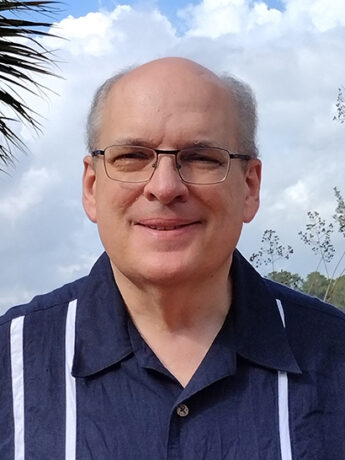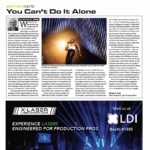
In this issue, we talk with the lighting team about the closing of the Broadway production of The Phantom of the Opera as it ends its historic 35-year run. They talk about the difficulty continuing the often-praised meticulous maintenance of the design, and equipment. After three and half decades, the shift in lighting technology has reached a tipping point as change-out choices were looming. In thinking about the difference in equipment, the massive changes in sources and control options, that have occurred over the amazingly long run of Broadway’s Phantom, it made me think about how many theatrical techniques are still the same at the core but how we achieve things is a world away from 1988. Nothing is going to slow evolution and change. Things never stay the same, but what is wonderful is that as live entertainment professionals and theatermakers many find new workflows, new possibilities and we still see productions, like Phantom, that are simply breathtaking. What people do with the tools, new or old, is what can be so exciting in our industry. It is about understanding the tools, the options offered and thinking, “what if…”
In our new In the Volume section, when we look at in-camera solutions—visual and virtual effects that can be done all in-camera and not in post-production, I have to acknowledge that many of the techniques are fairly older film and television ideas—Green and blue screen chromakey solutions to replace images—not new. Driving plates, and scenic projection of filmed backgrounds, being used outside car windows are movie magic staple techniques. Yet, the approach to achieving the results of these techniques has evolved with incredible speed in recent years. The ‘how’ things are done has changed the possibilities. Today, the landscape of virtual production means new roles, new access to techniques, and it is moving into new market segments throughout our industry.
The tools that have emerged in virtual production—Unreal Engine among them—are now the tools of live concert design. Designers Steve Cohen and Bob Bonniol in this issue tell us how transformative some of those tools were to their work on Blake Shelton’s recent tour. As an industry, adapting tools and then pioneering new workflows and methods is what makes many passionate about working in live entertainment. The technicians, manufacturers, rental and production houses are working hand-in-hand with creatives to realize unimagined worlds, locations, backgrounds, and environments to immerse audiences.

And the wonderful thing is that there is room for a wealth of approaches to the tried-and-true techniques; like on Phantom, it is about knowing what you want to achieve and finding the right path for the project. If you want to recreate the feel of gaslight in the 1880’s, perhaps no one will ever achieve it the same way LD Andrew Bridge so beautifully did on Broadway for The Phantom of the Opera, but achieve it, they will, it a whole new way. In fact, Bridge himself is tasked with doing just that as Phantom opens in Korea.
For our part, PLSN wants to continue to share the changes, evolutions, and previously unimagined approaches to the virtual and real-world solutions emerging. Let us know what you are doing, trying, exploring, what you’ve seen or come across, and who’s doing interesting work that you think should get some attention. Let’s keep this conversation about how we work expanding.
Travel Safe out there and Be Well.
Michael S. Eddy
Editor, Projection, Lights & Staging News


